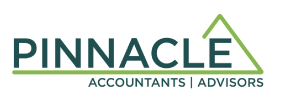
Tips – When are they considered employment income?
As accountants in a region rich with tourism, we’re often asked by employers the tax impact of gratuities.
For the recipient, it’s relatively straight forward. Tips are considered taxable income regardless of whether they’re listed on the employees T4 slip or not.
For employers, it’s not quite as simple. The difference between controlled and direct tips plays a major role in how your business needs to approach gratuities.
Controlled tips are employment income, these earnings are pensionable and insurable. They need to be processed as payroll, that means withholdings, remittances, and reporting requirements. In addition to that, your business will be liable for the employer portion of CPP and EI on those earnings.
Direct tips however, while still taxable income to the individual, are not considered employment income. This means your business is not responsible for administering these earnings as payroll and similarly not liable for the employer portion of CPP and EI.
So, how do we tell whether your employees are receiving controlled or direct tips?
Tips are controlled when an employer has influence over the collection or the basis of distribution. The CRA have provided examples of this, including:
- Automatic gratuities added by the employer,
- Tips distributed based on the employer’s formula, or
- Cash tips deposited into a business account and then distributed.
Direct tips are paid directly from customers to employees where the employer has no influence over the tip amount and its distribution. Examples include:
- Employees receive the whole amount of cash tips left by customers,
- Staff determine how to distribute tips amongst themselves, and
- Credit card tips, when they are tipped out as cash at the end of each shift.
If you find yourself unsure of where your business lands with its tipping structure, connect with your accountant, or give us a call.
Written by: Curtis Reeve, CPA
